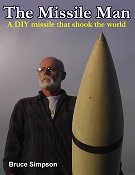
|
Aardvark DailyNew Zealand's longest-running online daily news and commentary publication, now in its 19th year. The opinion pieces presented here are not purported to be fact but reasonable effort is made to ensure accuracy.Content copyright © 1995 - 2014 to Bruce Simpson (aka Aardvark), the logo was kindly created for Aardvark Daily by the folks at aardvark.co.uk |
- Home :
- Commentary :
- Features :
- Sci-Tech News :
- Feedback :
- Follow Me on G+ :
- Forums :
- Contact :
- REPUBLISHING :

Please visit the sponsor! |
What's the problem?
24 April 2014There's a very interesting court case taking place in the USA at present.
Aereo is a company that effectively plucks free-to-air TV broadcasts from the air and makes them available as a video stream to its customers.
The broadcasters are crying foul but Aereo says it's not breaching anyone's copyright because it's simply delivering a service that does exactly the same thing as connecting a TV receiver to someone's computer.
When you think about it... Aereo has a pretty strong case and it's hard to see why the broadcasters aren't happy that their programmes (and ads) are reaching a wider audience thanks to this service.
It's hard to see how simply extending the range of a TV broadcast in this way constitutes any loss to the broadcaster -- indeed, most broadcasters are spending large sums of money to set up their own streaming services because they know that a growing percentage of their audience wants to view video content on phones, tablets and other computing devices.
When first challenged over its service Aereo responded by creating a *huge* array of antennas, effectively creating a one-to-one relationship between streams and content being received via broadcast. This strategy was designed to counter the assertion by broadcasters that the company was "copying" its material by virtue of hooking a single receiver/antenna up to multiple streams.
It seemed as if the US courts were going to accept that scenario but now the broadcasters have taken the matter to the Supreme Court.
Aereo is now arguing that they're not selling or providing any content at all through their service. They are simply renting the hardware needed to connect those broadcasts to a users' digital devices via a Net-based stream.
The company goes further and states that if its service is deemed to be a breach of copyright laws then all cloud services will be in jeopardy -- the premise being that in order for someone to access material via the cloud, a *copy* must be made in order to deliver that download.
Obviously the courts are going to be dealing with the semantics of the argument -- but what about the bigger picture?
If you are entitled (encouraged even) to watch a free-to-air broadcast by putting up an antenna and connecting it to your TV set then what is the issue with using a service that provides the antenna and receiver -- allowing you to simply connect your iPad or smartphone to the resulting data-stream?
How does the transient rental of such equipment at a remote location, as is the case with the Aereo service, any different to renting a set-top box that might sit in your own home and deliver the same service?
Why are the broadcasters arguing that the former is illegal but the latter is not?
Should a few Km or hundreds of Km of copper or fiber really make any difference?
These are the type of problems that the courts will increasingly have to deal with, as smart people come up with clever products and services that were never anticipated when copyright law was originally created or subsequently reviewed.

Please visit the sponsor! |
(Sorry, forums are stuffed at present)
Rank This Aardvark Page
Change Font
Aardvark feeds
Audio
Mates' websites

Apart from the kind support of the sponsor, Aardvark Daily is largely a labour of love that involves many hours of hard work each month. If you appreciate the content you find here (or even if you don't) then please visit the sponsor and also feel free to gift me a donation using the button above.
Remember, this is purely a gift, you'll get nothing other than a warm fuzzy feeling in return.
Features:
Beware The Alternative Energy ScammersThe Great "Run Your Car On Water" Scam
Previous Columns
A Next Big Thing
Advertising is the backbone of publishing and broadcasting - both the old fashioned print, radio and TV type media and the newer online versions...
Twitter running out of steam?
It seems as if Twitter's growth is plateauing which is not good news for a company which, after eight years of successive losses, is still bleeding red ink at the rate of US$645m a year...
China steps up to the plate in drone-wars
We are now so used to seeing the USA's hi-tech "drones" policing the skies over conflict zones and unleashing hellfire missiles on insurgents on the ground below that we no longer think much about it...
Time for a mil-spec browser?
According to reports on the wires this morning, the US Department of Homeland Defense has advised people to stop using Microsoft's Internet Explorer until the latest zero-day vulnerability has been fixed...
Google's mis-step-plus
When Google decided to force Google+ on its YouTube and other users, many within those communities were outraged...
What's the problem?
There's a very interesting court case taking place in the USA at present...
If you were a student today...
The world has changed a lot since I was a student...
Should bureaucrats take Science 101?
It seems that far too many people in positions of power and control have no real idea about essential subjects such as science...
Mars, Earth's ultimate liferaft?
New data about the history of the red planet has been gleaned from the observation of ancient meteorite craters on the surface...
Leaching off open source
I read something rather stunning this morning...

 The Missile Man book
The Missile Man book